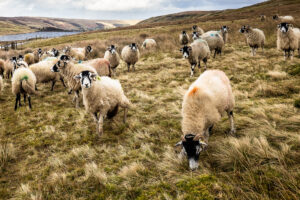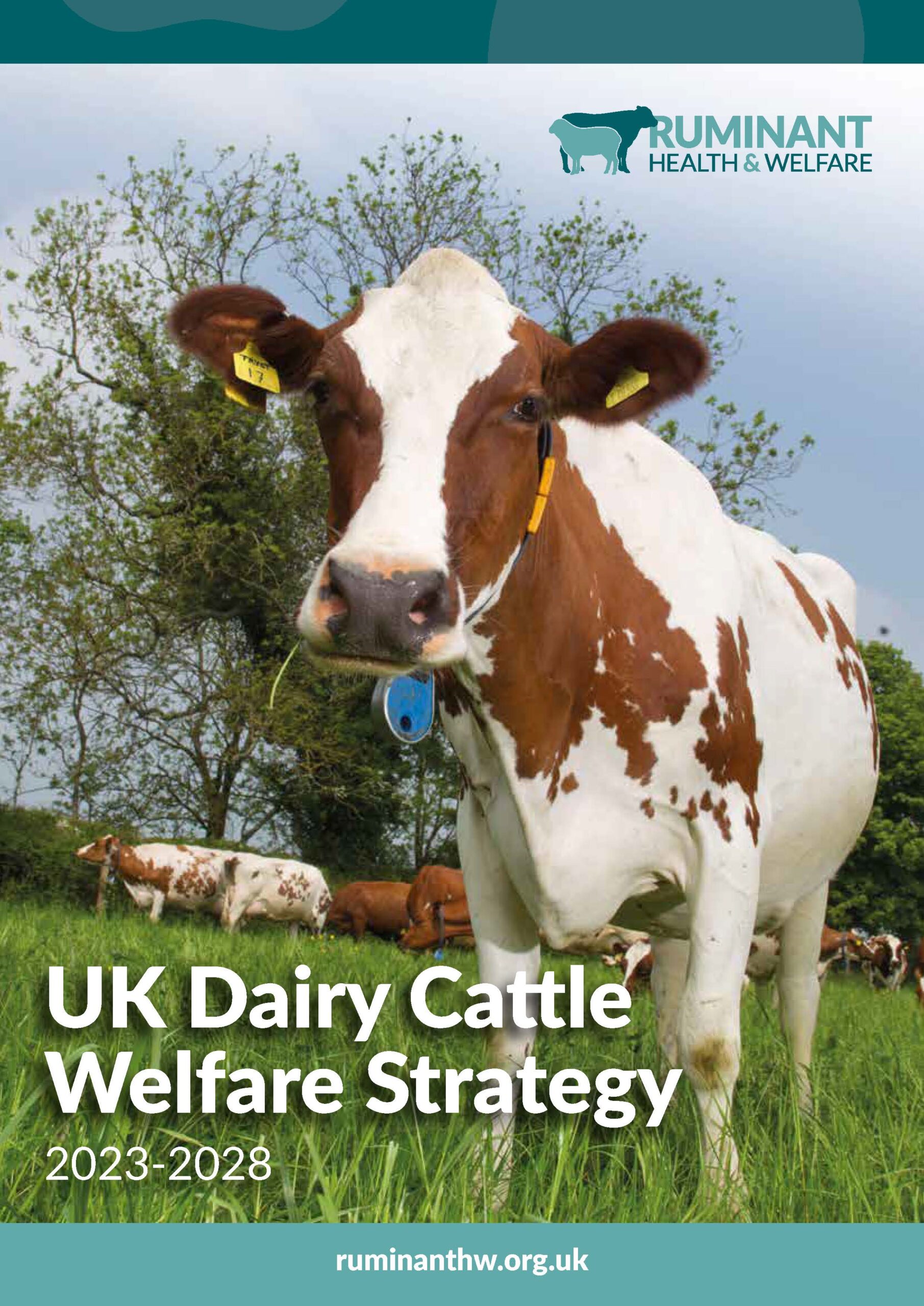Welcome to the latest issue of the RH&W newsletter.
Spring finally feels like it has fully sprung upon us over the last month. The landscape has erupted into colour and crops are beginning to flourish with sun shining.
As is often the case, with a change of season comes changes to organisations, and this is no different at RH&W. I would like to take this opportunity to give thanks to Nigel Miller, who has stepped down as chair of RH&W after three years of tenure. Nigel’s dedication and commitment to the ruminant sector and the wider farming community is clearly visible from his many years of dedication and wide experience and this continued through his time as RH&W’s first chair.
It is always a challenge to launch a new group, manage expectations and make progress. We made many strides forward and facilitated industry discussions, formulating strategies as we developed a voice for the group and have been very successful with Nigel at the helm.
I thank him on the group’s behalf for his inspired leadership and getting us off to a great start.
AHDB will be looking to recruit a new chair for RH&W following Nigel’s term with an aim to have a person in place by the end of the summer. As part of the process, they have been looking at the Terms of Reference for the group, and using feedback from attendees to ensure the group continues to meet industry requirements. We will ensure to keep you all abreast of the progress of this as the process evolves.
With best wishes,
Gwyn Jones, Interim Chair
Dairy welfare strategy to launch
The new UK Dairy Cattle Welfare Strategy for 2023-2028 will be launched this week.
The strategy, which is backed by more than 50 organisations across the whole dairy supply chain, is designed to help the industry show progress in six key areas of cattle welfare over the next five years.
“Ability to provide evidence of progress will assist in maintaining UK status as a global leader in dairy cattle welfare; helping us meet our environmental and sustainability targets allowing us to continue to compete with international players,” says RH&W vice-chairman, Gwyn Jones.
The dairy welfare strategy is part of a wider body of work at RH&W to facilitate and create welfare strategies for the whole UK ruminant sector – sheep and beef cattle ones will follow in due course.
Bill to ban live exports ditched
The UK Government has shelved a bill to ban the export of live cattle, sheep and pigs for fattening and slaughter.
On 25 May, Defra farming minister Mark Spencer told the House of Commons that the Animal Welfare (Kept Animals) Bill was being dropped.
He said although animal welfare has been a key priority of the government, the legislation in the bill ‘risked being extended far beyond the original commitments in the manifesto’.
Mr Spencer told MPs that the government planned to take forward measures from the Kept Animals Bill individually during the remainder of this parliament.
Other measures within the bill included tougher legislation to tackle livestock worrying.
Find out more here.
Scottish ear tag survey
Scottish cattle and sheep keepers are being asked to complete an online survey about their practical experiences with ear tagging.
It forms part of a project, led by Scotland’s Rural College (SRUC) and funded by the Scottish Government, to better understand the various factors that contribute to ear tag losses on farms and crofts.
“We’ve come to understand that lost, damaged and unreadable tags are a function of initial application, the external environment and tag performance – a so-called ear tagging triangle,” said SRUC team leader, Dr Sam Beechener.
“We’re keen to explore these interactions in the next stage of the project by collecting data from a broad cross-section of livestock keepers across Scotland through a new survey.”
He said all responses to the survey, which should take no longer than 10-15 minutes to complete, would be treated in confidence.
The survey is available here.
Nitrate silage warning
Farmers have been urged to grass sample for nitrate levels before cutting silage.
According to Farmers Weekly, there has been a worrying rise in reports of yellow and brown fumes coming from silage clamps – something that is likely to be caused by nitrogen dioxide.
The issue is believed to be caused by the slow, cold spring and silage specialist, Dr Dave Davies from Silage Solutions, said it is more commonly associated with first-cut silage.
His tips for preventing the problem are:
- Test grass and forage samples before harvesting
- Although first-cut often presents a problem, be aware that the issue could occur in every cut throughout the summer – depending on weather and nitrogen uptake
- Delay cutting if nitrate levels are too high and re-test
- Be aware that crude protein samples over 18% and nitrates above 0.25% fresh weight could lead to fermentation problems and pose a health risk to staff and livestock. Nitrate levels of 0.15-0.25% could still pose fermentation problems.
Charlotte Ward, ruminant technical manager KW Feeds, has urged “extreme caution” if there is even a slight indication that nitrous oxide is forming in clamps.
She said: “Do not breathe in near the areas where the gas is visible, or suspected – tell-tale signs can include silage discolouration, often turning to a bright yellow-orange colour.”
Worm resistance EBV project
An industry-led project looking at worm resistance and resilience in hill sheep has been praised by farmers.
The project, launched by Meat Promotion Wales (HCC) last autumn as part of the Hill Ram Scheme, set out to identify genetic differences between sheep in their ability to acquire resistance to internal worm parasites.
Almost 1,000 sheep from 10 farmers involved in the Hill Ram Scheme were provided for the project, which ultimately aims to develop new estimated breeding values (EBVs) to help farmers select sheep for their resistance to worms.
Project participant Peter James, who supplied 150 improved Welsh mountain lambs for the trial, explained it has already provided key data for his business.
“One ram in the flock was highlighted as being prone to worm infection, so we were able to cut our losses and remove him from our breeding programme,” said Mr James.
“We can also follow that process through with his daughters to prevent any further negative impact on the flock, which is a huge development for us.”
Explaining the importance of the project, Dr Heather McCalman from HCC said: “Using techniques like faecal egg count reduction tests, farmers have found that [worm] treatments over time have become less effective and are looking into sustainable approaches.
“Using genetics is a key factor in our work to ensure healthy animals and that quality food is produced for our consumers.”
More information about the Hill Ram Scheme is available here.
New tool to interpret FEC results
A free online tool to help farmers interpret the results from faecal egg count (FEC) tests for roundworms has launched.
Developed by parasitologists at the Moredun Research Institute, with funding through the Scottish Government’s SEFARI Gateway Innovative Knowledge Exchange, the tool is available at FEC Check | Moredun.
Moredun said although FEC tests are simple to carry out, translating the results into management decisions can be more difficult – especially for those who are new to testing.
“We have developed FEC Check to simplify the understanding of faecal egg count results and assist with decision-making by visually demonstrating what the results mean clinically,” added Moredun.
“The tool combats variation in reporting among providers, ensuring that everyone has access to the information they need to make knowledgeable management decisions.”

New tool to interpret FEC results
Farmers are being reminded of new rules which will require a ‘Statutory Health Attestation’ to allow the future sale of animals destined for export from 13 December 2023.
The National Sheep Association (NSA) says it plans to work with other industry organisations to ensure farmers are aware of the new rules.
In order to comply with EU export certification requirements, farmers have had to declare that their animals have undergone regular visits by a vet.
However, from 13 December farmers will need to provide an independent health attestation – either through membership of a qualifying farm assurance scheme or from a valid veterinary declaration.
“This rule change is likely to impact all sheep farmers regardless of whether sales are limited to breeding or store lambs,” said NSA chief executive, Phil Stocker.
“The attestation will give evidence that at the time of the visit, the farm was free from a number of stated notifiable diseases, and that there’s a good standard of disease control and biosecurity.”
He said a standard form was available for vets to use, and farmers should speak directly with their vets to ensure they are compliant for any animals destined for export.
“In the period between now and December, farmers are advised to ask their vet to provide this attestation when they’re out on farm conducting any routine visit,” added Mr Stocker.
“It is strongly advised not to leave this until December.”
This change relates to the export of POAO and farms consigning animals for slaughter. In these situations the farm or business need to have an SHA or be a member of a recognised assurance scheme.

